California’s Climate Whiplash
The state broke snowfall records after three of its driest years ever. Now floods wreak havoc. These swings are the new normal—and they’re very hard to manage.
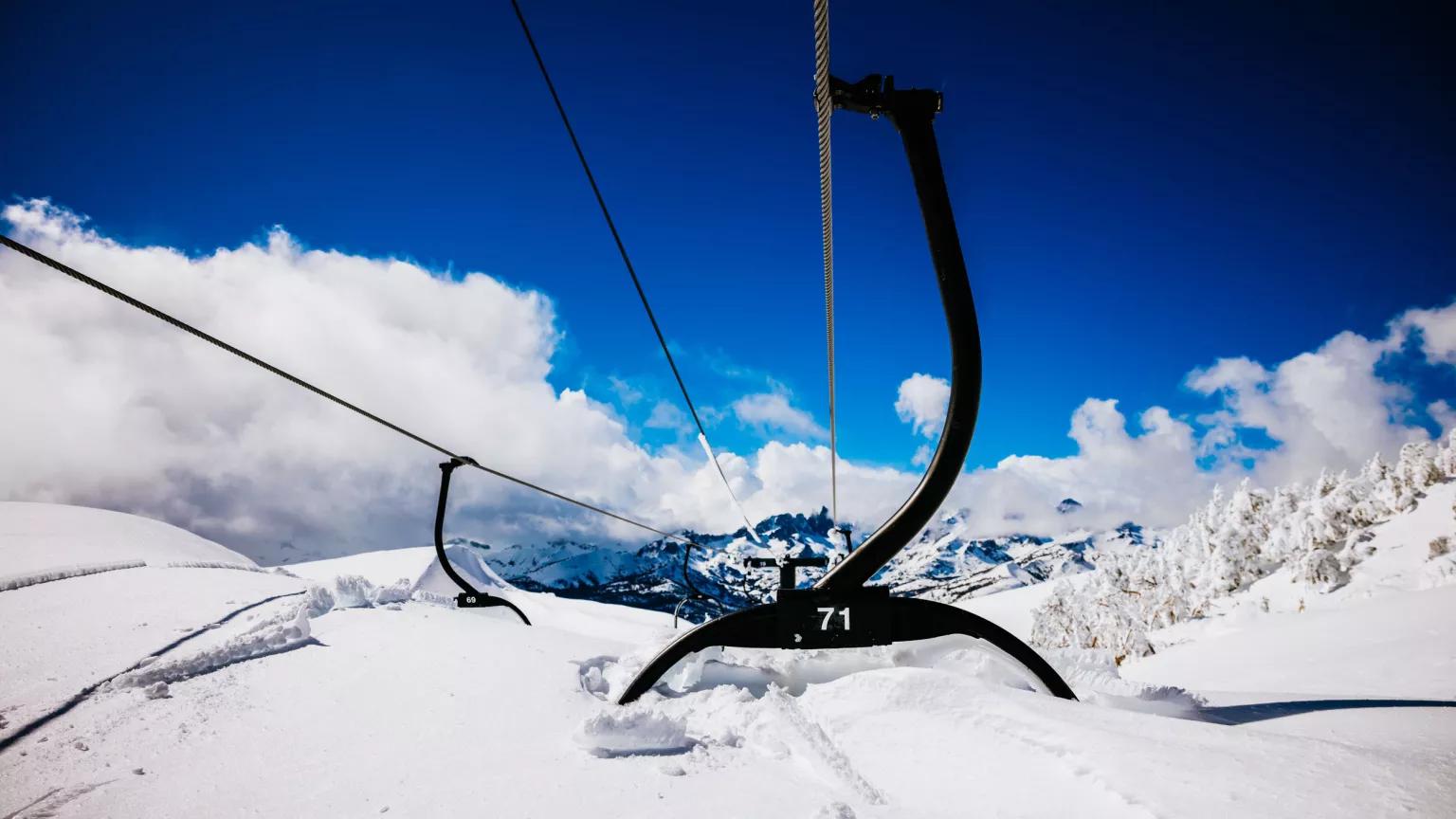
Chairlifts buried under snow at Mammoth Mountain, California, in March 2023
Peter Morning/Mammoth Mountain
It’s official: California just had one of its snowiest winters in recorded history, with areas receiving more than 700 total inches. In fact, by mid-January, the state’s snowpack had already blown past its average for the entire season, which runs from October 1 to April 1. Then in late February, snowfall accumulations in the Central Sierra Nevada mountain range jumped more than 140 inches in a single week, burying homes and chairlifts in deep, white powder.
The Sierra Nevada stretches for about 400 miles along the eastern edge of California, and its annual snowpack provides the state—which has dealt with severe drought conditions for much of the 21st century—with about 30 percent of its fresh water supply. So this year’s high snowfall amounts sound wonderful. But if the snow melts too quickly, flooding can bring devastation. A fast and early snowmelt can also lead to a worse fire season.
Timing is crucial to seasonal temperatures and precipitation, and intertwined in this delicate relationship are California’s ecosystems, agriculture industry, and communities. As climate change intensifies, extreme weather patterns are expected to continue and their unpredictability is adding to already contentious battles over water in the West.
“We’re going through this climate whiplash of extreme drought years to extreme wet years—there are just no average years anymore,” says Doug Obegi, a senior attorney at NRDC who works on water resource management in California. “And we’re seeing that we are not prepared for either of those extremes.”
Why is snowpack so important?
Snowpack is simply the snow that remains on the ground after a storm. In high elevations like the Sierra Nevada and other mountain ranges, snow typically stays frozen all winter long, before melting throughout the spring and summer. In ideal circumstances, a gradual melt provides a steady supply of water to lower elevations during the region’s drier months.
“It's convenient to have this natural time-released water storage in the form of snowpack, and we've designed a lot of our Western water systems to accommodate that,” says climate scientist Dr. Daniel Swain of UCLA’s Institute of the Environment and Sustainability.
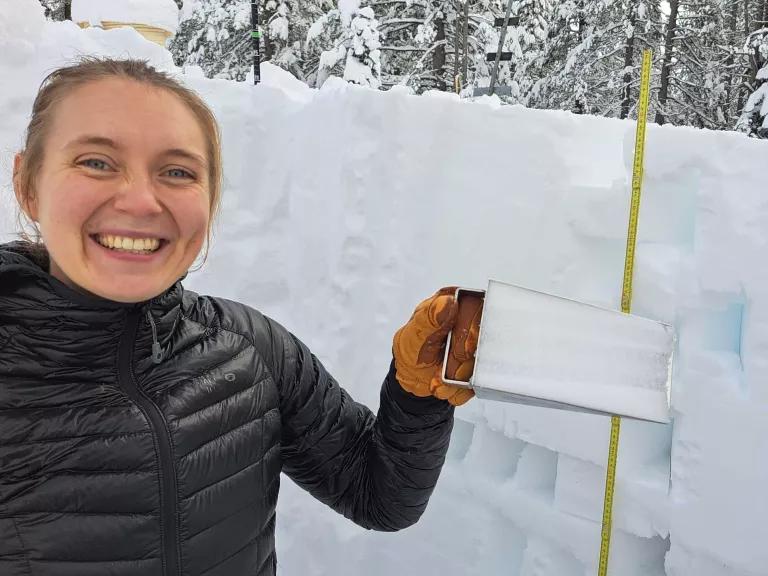

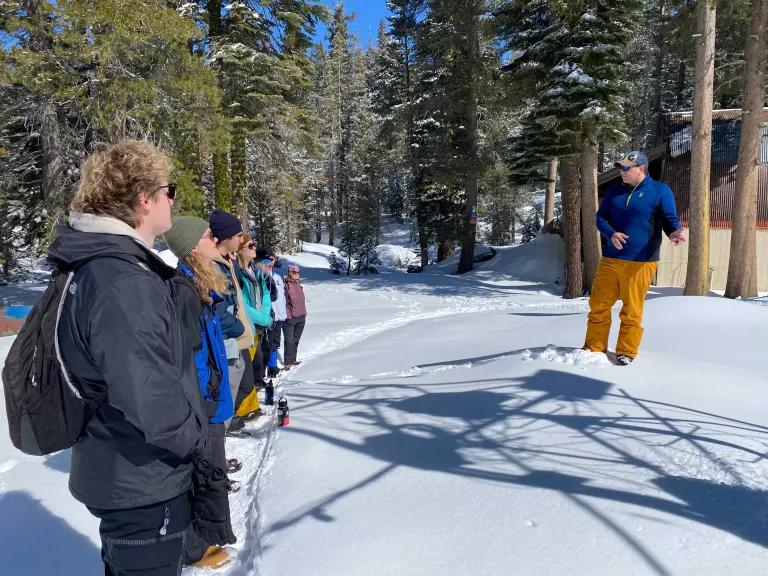
U.C. Berkeley PhD graduate student Marianne Cowherd in a snow pit showing the snowpack stratigraphy/layering; U.C. Berkeley undergraduate student Sanya Kwatra entering handwritten Central Sierra Snow Lab records of temperature, precipitation, and snowpack back to 1956; Snow Lab lead scientist, Andrew Schwartz, with a University of Nevada, Reno snow hydrology class.
Central Sierra Snow Laboratory, U.C. Berkeley
; 2) No credit; 3) No creditFor that reason, scientists don’t just track the depth of the snowpack—they also measure the snow water equivalent (SWE), or the amount of water the snowpack contains. “Talking about how much snow is falling is very exciting, partially because that’s the measurement that everyone wants to look at when they're trying to figure out whether or not to go skiing, but it really doesn't tell us anything about water,” says Dr. Andrew Schwartz, lead scientist and station manager at the University of California, Berkeley Central Sierra Snow Laboratory. The structure of snowpack forms at various densities, so throughout the season, Schwartz and his team collect and weigh snow samples to determine just how much water they contain.
According to the California’s Department of Water Resources’ (DWR) April 1 snow survey, the statewide SWE was 61.2 inches—237 percent more than average. (Regional numbers vary: The Southern Sierra nearly reached an astounding 300 percent of normal, while the Northern Sierra came in at 192 percent of its average.)
As one of several water sources for at least 27 million people and 750,000 acres of farmland, the Sierra Nevada snowpack is considered California’s largest reservoir. The runoff is also critical to biodiversity and rivers, such as the San Joaquin and Sacramento. Salmon, for instance, need cold water to reproduce and good river flows as the juveniles migrate to the ocean. Without reliable snowmelt washing into their habitats, their populations won’t survive.
Unfortunately, in a warming climate, this relationship between snowpack, snowmelt, and ecological health that we’ve come to rely on has been breaking down. Over the past 10 to 15 years, the variability in snowpack levels has been incredibly high, while the ability to predict them has been very low. “The traditional metrics and methods we use are less and less appropriate,” says Swain. “It was never simple, but now it's gotten even more complicated.”
Indeed, determining how much snow will likely fall, or how quickly it may melt, is becoming increasingly difficult. Take last season, for example. California experienced one of its wettest Decembers ever in 2021, but then the driest January through March on record immediately followed. Even in years when snowpack levels are closer to average, water availability during summer isn’t a guarantee. More frequent winter rainstorms and warmer springtime temperatures can melt the snowpack prematurely and rapidly. And while snowpack is great for saturating the landscape ahead of fire season, it can’t do the job as well when the snow melts faster than the ground and vegetation can absorb it.
“The challenge is that we're going to see more of everything as the climate warms,” Swain says. “We're going to have bad fire years. We're going to have bad flood years. They don't negate each other.”
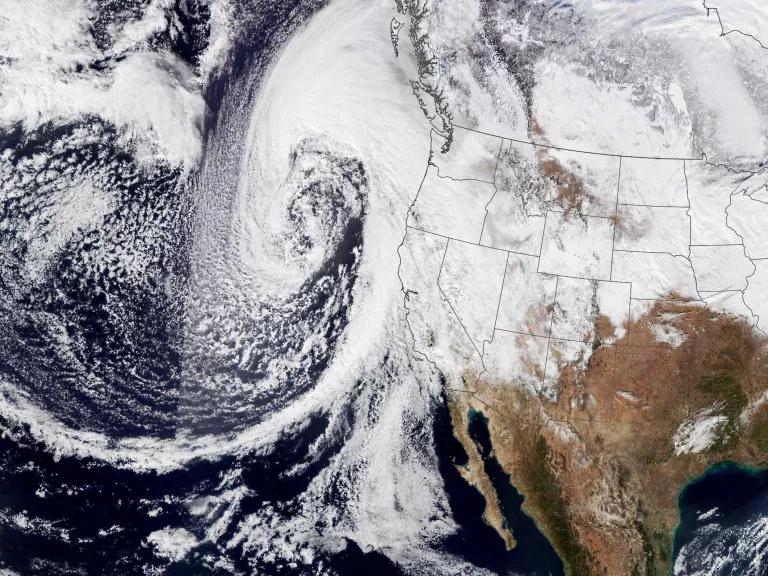
An atmospheric river soaks California in January 2023.
NASA Earth Observatory
Atmospheric rivers: too much of a good thing
This year’s record-breaking snowpack is largely a result of many so-called “atmospheric rivers”—at times back-to-back—that have struck California since December. Atmospheric rivers are long and narrow streams of moisture over the ocean, sometimes referred to as rivers in the sky, that transport water vapor from the tropics to higher latitudes. When they reach land, they release massive amounts of water vapor as heavy snow or rain. Though the term for the phenomenon was only coined by researchers a few decades ago, these weather patterns are nothing new; they’re typically responsible for 30 to 50 percent of the West Coast’s annual precipitation. But as climate change intensifies, so will the severity of the atmospheric rivers hitting California (even as scientists expect them to decrease in frequency).
The current snowpack helped lift much of the state out of years of drought conditions, but now comes another extreme: flooding. “It's likely to get far worse in the next couple of months,” says Obegi. “When it comes to snow and rain, there can be too much of a good thing.”
The same storms that brought snow to the mountains dumped large amounts of rain on some California communities—particularly low-income towns in flood-prone areas that didn’t have adequate infrastructure to protect them. In mid-March, for instance, stormwaters breached a failing levee on the Pajaro River in Monterey County, leaving an agricultural community underwater and thousands of farmworkers displaced and without income.
Now, as temperatures warm, California is bracing for what Swain and others refer to as the “big melt.” According to DWR’s water supply forecasting manager Sean de Guzman, the spring snowmelt is also likely to break records. For instance, the Kern River watershed, which lies at the southern end of the Sierra Nevada, is predicted to receive 422 percent of its average snowmelt runoff. The risk is keenly felt in Kern County, where officials have been warning residents to clear their drains, draw up evacuation plans, and prepare “go bags.”
Living in California’s new normal
Scientists agree: Climate whiplash will continue to define California’s future. But the concerns don’t stop there. According to a 2021 study, California’s Sierra snowpack could disappear completely within the next 25 years “if anthropogenic climate change continues unabated." A critical question now, Obegi says, is whether the state—and its residents—will begin to manage water accordingly.
Alongside ensuring infrastructure upgrades needed to manage the impacts of intensifying storms—including restoring floodplains and flood-absorbing wetlands—California also needs to prepare for intensifying droughts. “It's not really a solvable problem without reducing demand,” he says, stressing that adopting effective water management practices is essential to coping in dry years. Investing in programs that incentivize efficiency, water use reduction, and wastewater recycling practices could have a significant impact on water availability. Some communities have been leading the way. Orange County, for example, recently expanded its groundwater replenishment system to produce up to 130 million gallons of purified recycled water each day, and there are several other large-scale water recycling projects in the works in southern California. Capturing and storing stormwater in urban areas, especially in wetter years, could offer immense relief when dry spells inevitably return. According to a 2022 report from the Pacific Institute, if the correct measures are taken in high precipitation years, urban areas overlying public supply aquifers have the potential to collectively capture 780 billion more gallons of stormwater annually.
If California is ever going to achieve a sustainable water supply, these measures and many other forms of climate adaptation will be necessary for the state to start facing the hard facts of its future. “There’s always too much or not enough, but never the right amount,” says Obegi. “There is no Goldilocks in California water.”
This NRDC.org story is available for online republication by news media outlets or nonprofits under these conditions: The writer(s) must be credited with a byline; you must note prominently that the story was originally published by NRDC.org and link to the original; the story cannot be edited (beyond simple things such as grammar); you can’t resell the story in any form or grant republishing rights to other outlets; you can’t republish our material wholesale or automatically—you need to select stories individually; you can’t republish the photos or graphics on our site without specific permission; you should drop us a note to let us know when you’ve used one of our stories.

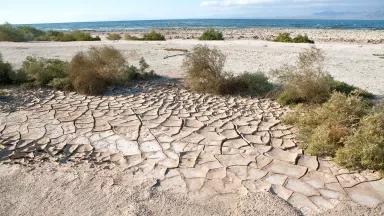
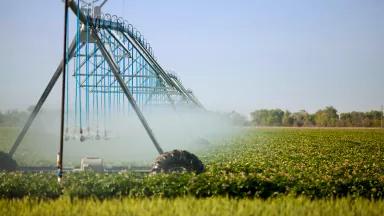
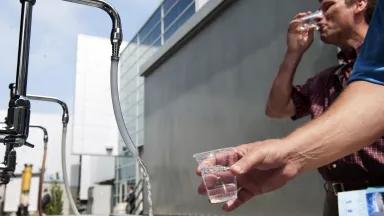
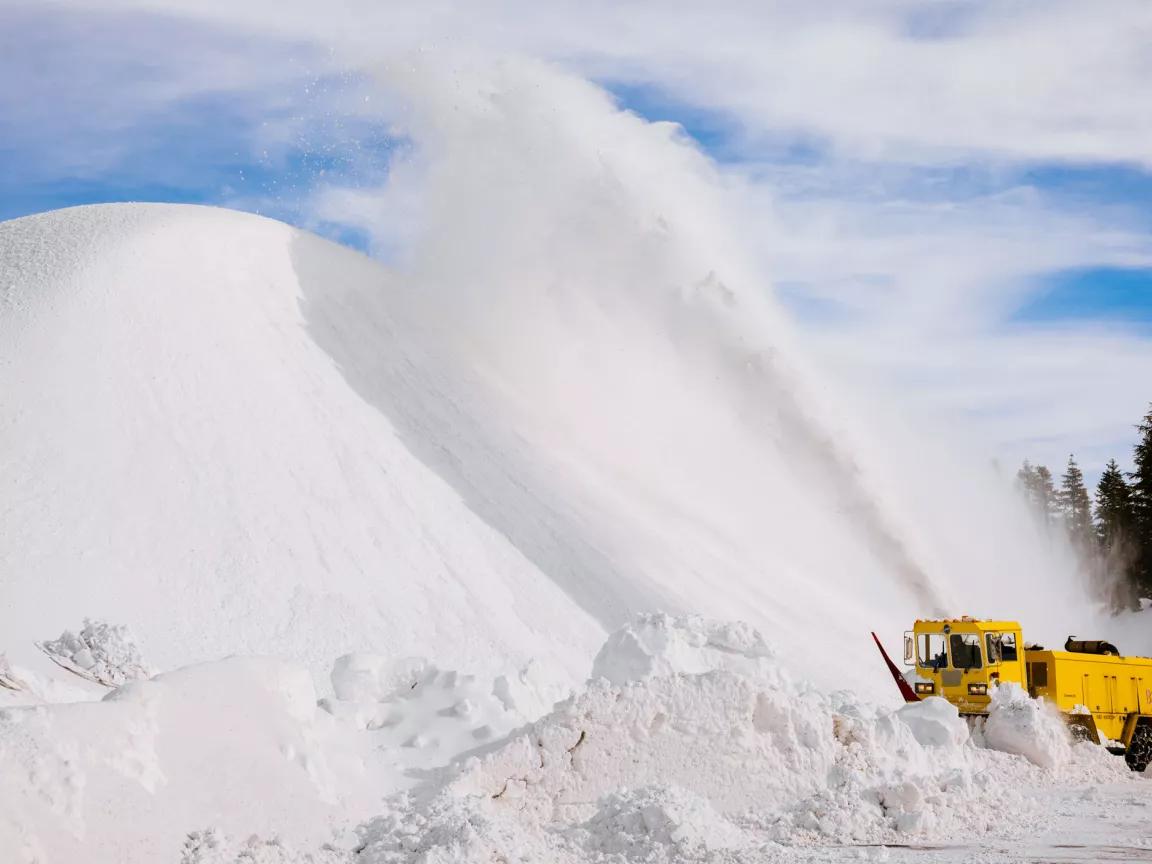
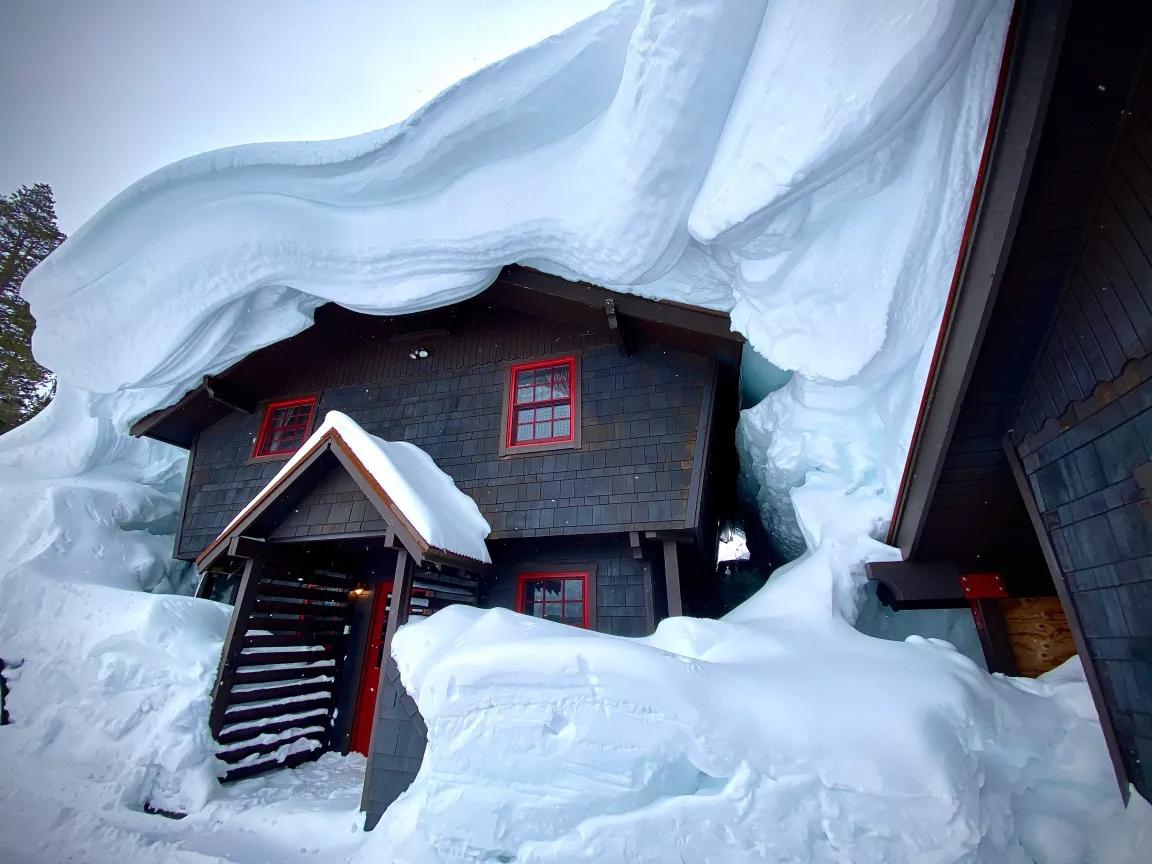
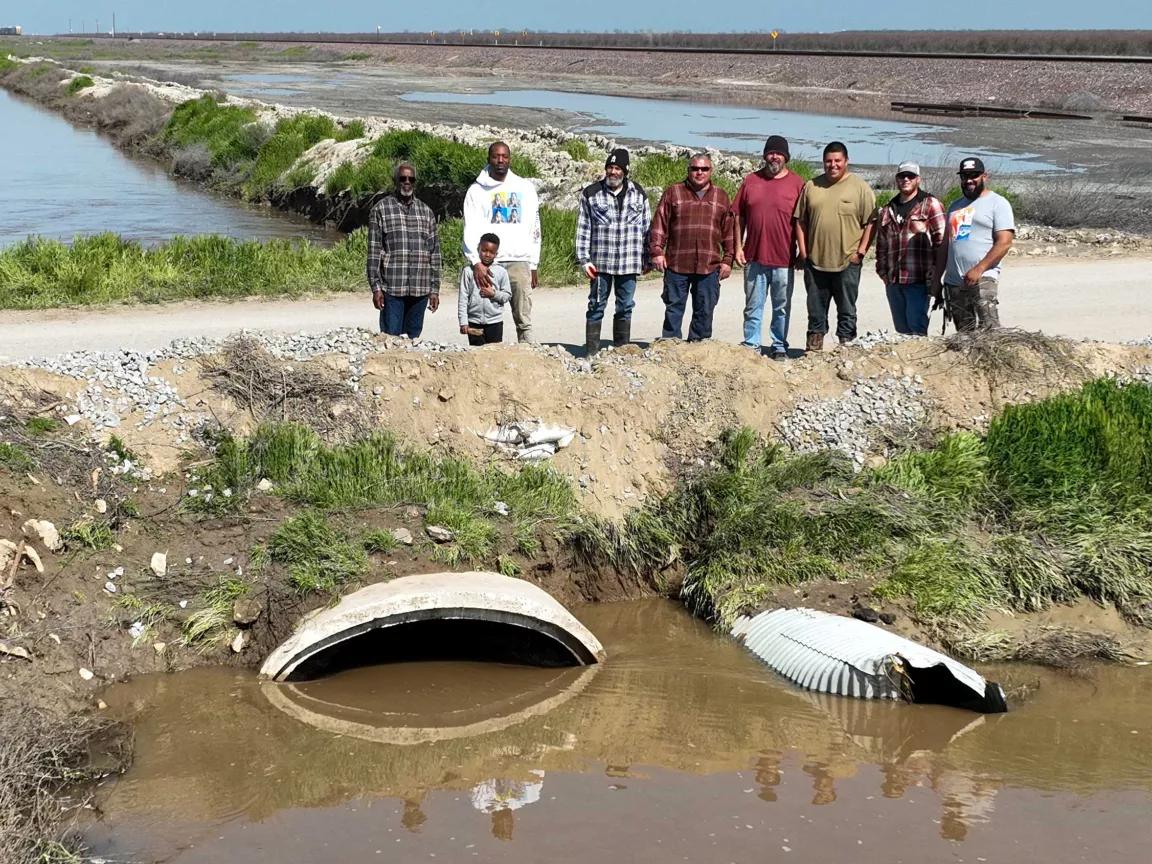
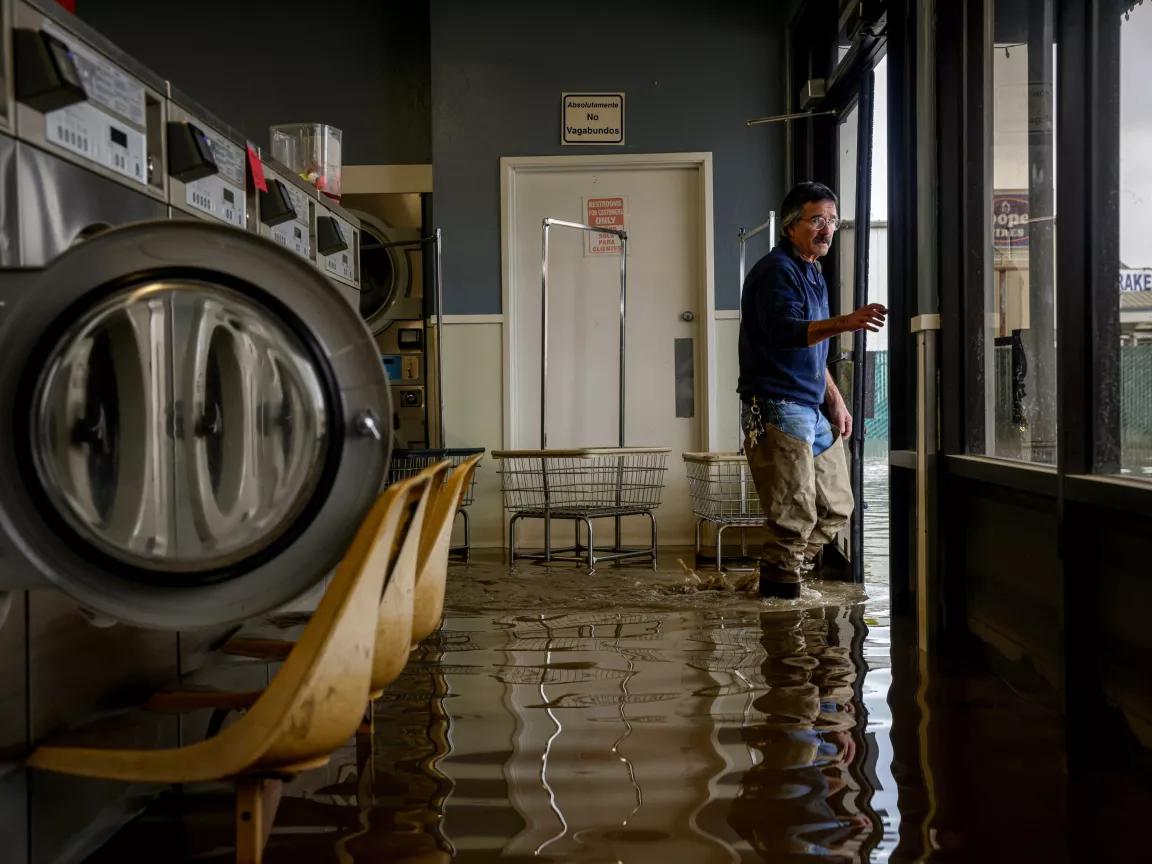
A Decade on the California Delta
How California Will Weather Drought
Slip-sliding Away